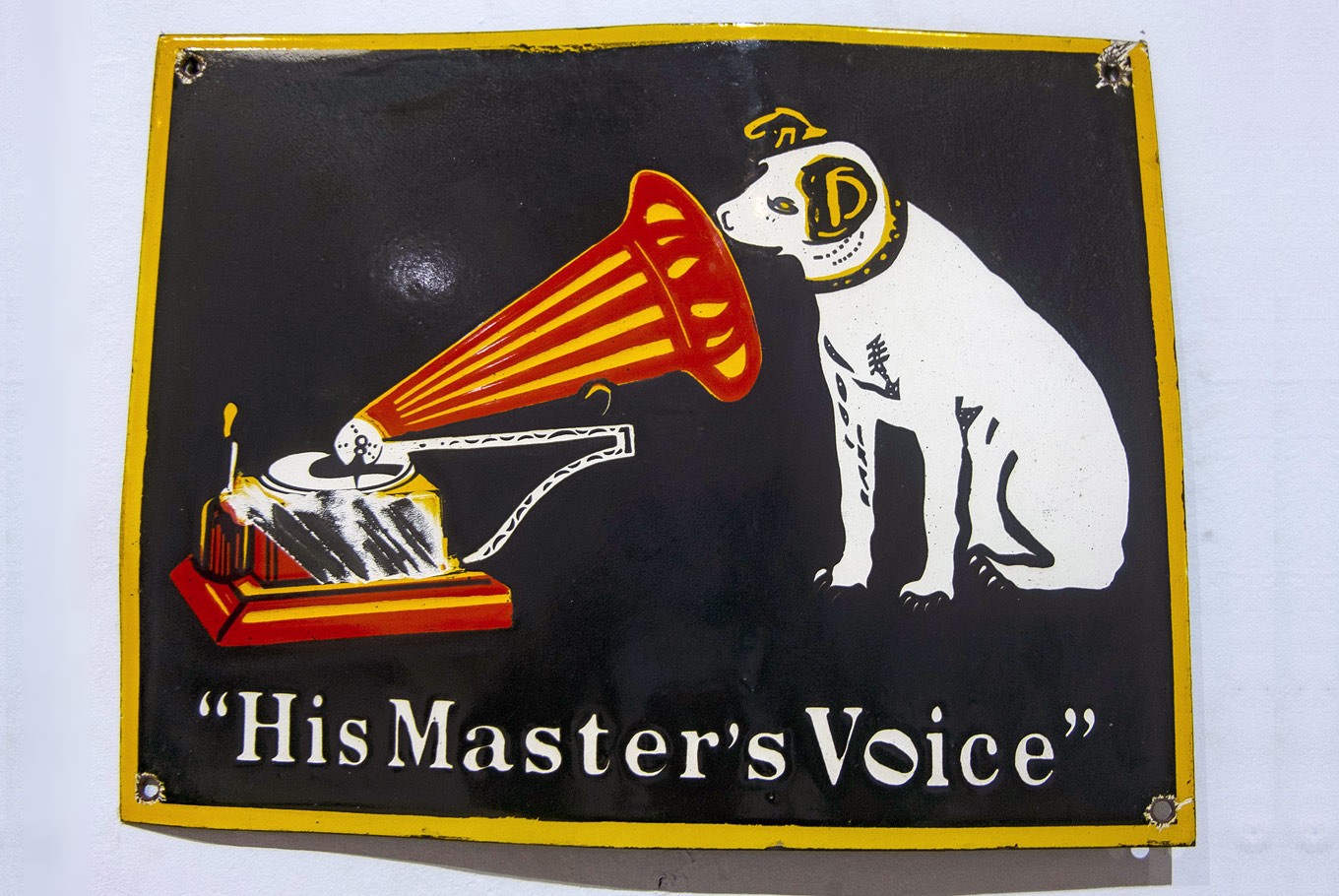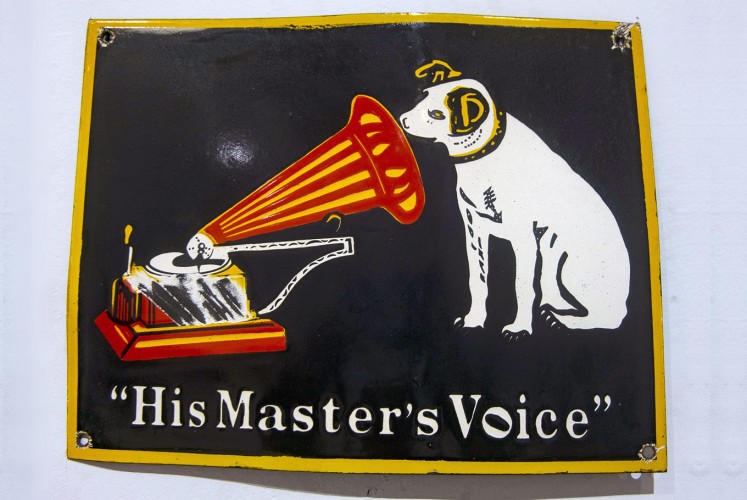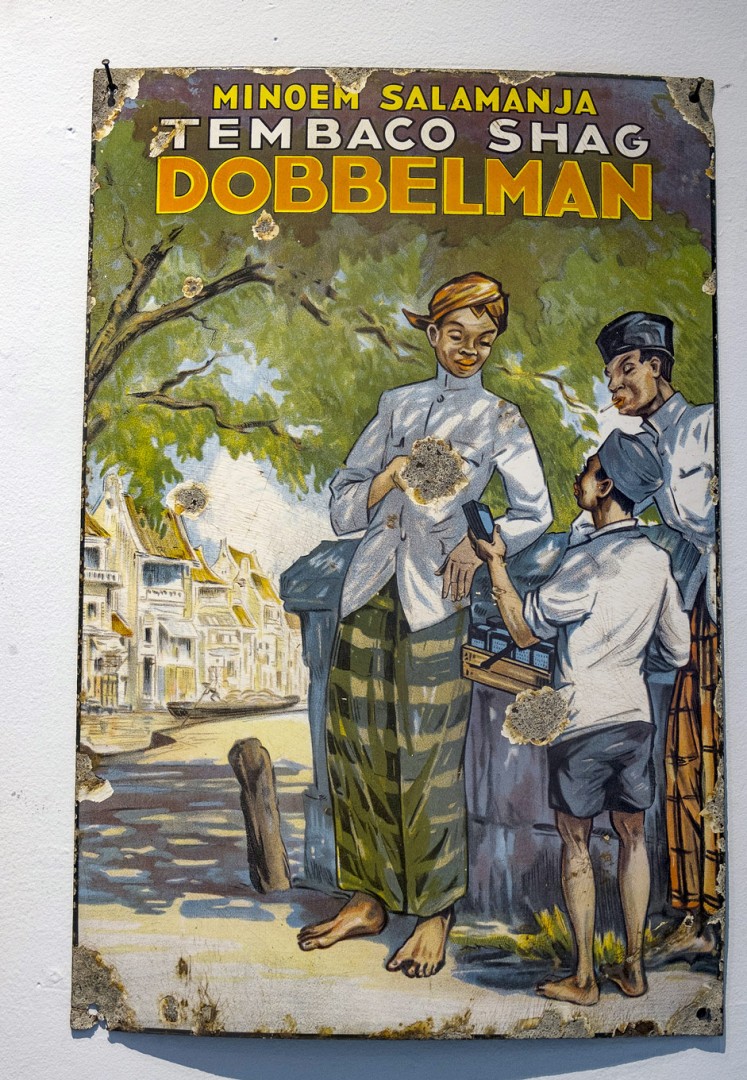Popular Reads
Top Results
Can't find what you're looking for?
View all search resultsPopular Reads
Top Results
Can't find what you're looking for?
View all search resultsARTJOG 2018: Flashback via vintage ads
Through the advertisements, we can see the trends and lifestyle of the people including Indonesians, Malay, Chinese, Dutch and others living in the country during the colonial era.
Change text size
Gift Premium Articles
to Anyone
K
arina Rima Melati, a granddaughter of the late maestro Widayat, could barely back tears after touching the enamel advertisements displayed at Bentara Budaya Yogyakarta on Monday.
The two enamel signs, made during the Dutch colonial rule, could only previously be enjoyed by her in a book. Now she could directly feel the items she admired.
Of dozens of enamels displayed during the exhibition held as a parallel event for the annual art event ARTJOG 2018, only these two really touched Rima’s heart — the enamel ads for Tembaco Shag Dobbleman and Tembaco Shag Neptune.
“These old advertisements are very rare. Even in the Netherlands this type of enamel is difficult to find. They can fetch up to Rp 80 million [US$5,640] each,” she said, adding that stories of enamel advertisements had become a personal matter for her.
A few years ago, to finish her studies at the Indonesian Institute of the Arts (ISI) Yogyakarta, she wrote “Studi Iklan Enamel Zaman Kolonial di Indonesia” (A Study on Enamel Advertisements of the Colonial Era in Indonesia) as her final paper. Next month, she will launch a book on such enamel advertisements.
Rima said exhibitions like the one being held at Bentara Budaya Yogyakarta until May 22 could remind people of the economic and political situation and condition of Indonesia before independence. Through the advertisements, we can see the trends and lifestyle of the people including Indonesians, Malay, Chinese, Dutch and others living in the country during the colonial era.Although the advertising world of that era was not as sophisticated as today, she said, enamel advertisements of that age already displayed attention to setting, color and text.
“From the enamels we can see whether the message of the advertisement was addressed to Dutch, Javanese or Malay consumers, or to all consumers if three languages are used,” said Rima who is currently a lecturer at the Yogyakarta Communication College.
Listen up: An enamel sign depicts a dog and a gramophone. (JP/Tarko Sudiarno)Separately, the exhibition curator Hermanu said the enamels exhibition was important because they were limited in number and used strong materials that lasted for a long time.
He said if well maintained and continuously cleaned, enamel advertisements could last for hundreds of years. While the paints of other advertisements made of paper or wood fade away in 100 years, enamels can still have a new look regardless of whether they were made in the 1900s or the 1940s, thanks to the paint used.
Enamel advertisements were the image-building method used by stores or trade agencies as promotional materials.
“It is therefore no exaggeration if we entitle this exhibition INDIE, which more or less means Indonesia during the Dutch colonial era,” Hermanu said.
Vintage: An enamel sign advertising tobacco is on display at an ARTJOG 2018 exhibition at Bentara Budaya Yogyakarta. (JP/Tarko Sudiarno)He said the exhibition presented enamel advertisements made during the Dutch colonial time before World War II because after the war not many enamel advertisements were made as many of their factories were bombed.
Enamel advertisements were made in European countries such as the Netherlands, England and France. They were shipped to Indonesia, where it took some time before they reached their destination.
Most of the enamel advertisements currently being displayed at Bentara Budaya Yogyakarta are from the collection of Subi, an antiques collector living in Klaten, Central Java.
They advertise various products from the Netherlands, the United States, Germany, France, India and Japan, including tobacco, cigarettes, soap, car tires, beer, banks, bicycles and spices.
Rima said looking at the enamel advertisements was like looking at a portrait of Indonesia during the Dutch colonial days.
“Vintage advertisements were very good and futuristic. They also bring to mind the ethnic diversity of Indonesia,” she said.













